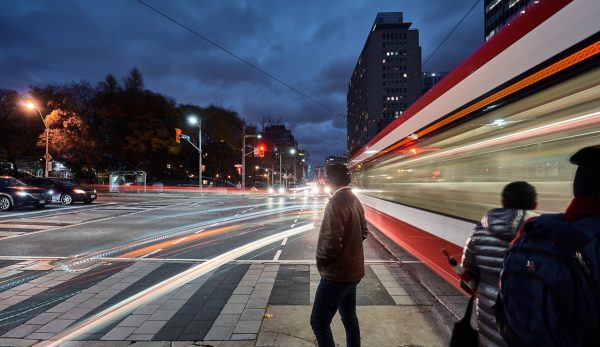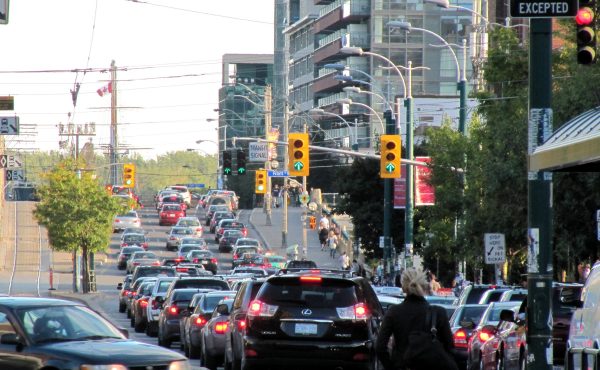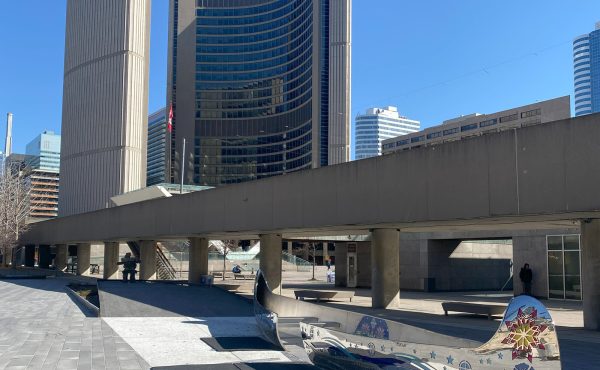A day or so before the deadline for a threatened TTC strike, New York State governor Kathy Hochul torpedoed a much anticipated and controversial congestion pricing plan that would have seen drivers entering Manhattan on all the bridges, tunnels and avenues south of 60th Street pay a toll, the proceeds of which would fund long-overdue expansions to the transit network (the proposed daily rates for passenger vehicles was $15, with $7.50 for motorbikes and $2.50 for ride shares).
The Big Apple has a weird and dysfunctional transit governance system that places authority for the city’s subways and buses in the hands of Albany legislators rather than City Hall. The Metropolitan Transportation Authority (MTA) therefore gets to be the battlefield upon which New York’s governors and mayors do battle. Hochul’s unexpected 11th hour move — the congestion charge, which both the governor and her predecessor actively promoted — means the anticipated billions raised by the new levy have gone up in smoke.
Reeling, the MTA’s top officials quickly held a press conference saying they’ll now have to double down on keeping the system — which is decrepit but indispensable — alive and screeching.
I have no insight into the reasons or timing behind Hochul’s decision — election year calculus seems like an obvious suspect, according to several media analysts — but one can say this much: at least there had been the political ambition to take a bold step towards financing transit infrastructure, and perhaps this latest version of the plan, or some variation on it, will rise again.
The coincidence in timing between Hochul’s reversal and a possible TTC strike underscored for me the total lack of ambition that currently pervades transit politics in Toronto, such as it is.
The prospect of a TTC stoppage, though definitely dire, may have tracked differently than the threats of previous ones. For the hundreds of thousands of Torontonians who suddenly had to work from home as of March, 2020, a TTC strike likely seemed less ominous because they already had a tried and tested Plan B.
The strike, in other words, would have mainly disadvantaged everyone deemed to be an essential worker during the pandemic. Some continued riding buses to destinations like hospitals or long-term care homes, while others drove to their workplaces or pivoted to active transportation (and may not, in fact, have returned to the TTC). The upshot is that the people in the former category — who are likely earning at the bottom of the income scale — would have been the main victims of a walk-out.
It’s also true that traffic congestion in the city — but particularly the core, and the drastically reduced Gardiner Expressway — has become terrible all the time, because of road construction, closed off lanes around development sites, and the Ontario Line construction.
A strike would certainly have made traffic worse, but maybe just by degree — not a non-event, to be sure, but neither the kind of big bang disruption created by previous transit strikes. Either way, it seems clear that City officials now have even less incentive to press ahead with the handful of generally modest proposals to pedestrianize streets like John or lower Yonge for fear of arousing the car-war bear.
Against this backdrop, we find ourselves stuck in a strange limbo state. The roads are horrible, transit usage has almost bounced back, and, with the exception of Finch West and maybe the Eglinton Crosstown, the various Metrolinx mega-projects won’t be ready for prime time for years (tunnelling on the exquisitely delayed Scarborough subway only began last year). The replacement of the Line 2 subways similarly won’t happen anytime soon; likewise the culmination of the interminable track-level signalling project, which theoretically will reduce head-times, if it is ever finished.
Meanwhile, Mayor Olivia Chow and council seem oddly content to do little more than tinker with existing plans. They’ve accelerated the bus rapid transit lane strategy and budgeted money for a bus corridor to provide shuttle service along the former Scarborough SRT route.
Council also voted to continue to flow funding for engineers and designers to prepare technical plans for the two big complicated surface rail projects that are on the books — the $2.6 billion Waterfront East LRT, which is meant to connect Union Station and Villiers Island, and the $4.7 billion Eglinton East LRT, which will run from Kennedy to UTSC and on up to Sheppard East.
Yet there’s virtually no funding earmarked for either, and Chow has made it clear that she’s not prepared to borrow to finance transit expansion projects, given the city’s backlog of infrastructure maintenance. Interestingly, the TTC’s newly approved 2024-2028 corporate plan has been scrubbed of any mention of those two LRTs.
Money for such ventures won’t be coming any time soon from Queen’s Park, which now owns Toronto’s two legacy highways. As for Ottawa, let’s just say that if Pierre Poilievre’s Conservatives win next year’s federal election, Toronto may well get even less infrastructure funding than it currently receives, if only as a punishment for being so Liberal.
I’d argue that a realistic, and not even excessively pessimistic, prediction is that the full complement of rail-based Toronto transit lines that are either under construction or in the planning process won’t be fully operational until the mid-2040s — almost two generations after David Miller unveiled his Transit City plan (2007), which first proposed most of this network. Villiers Island, needless to add, will be mostly built out, and gripped by Liberty Village-calibre gridlock, long before the long-planned LRT loop out to the Port Lands goes into operation.
Indeed, we’re so mired in the utter inertia of our spectral brand of transit politics that it’s almost impossible for anyone to propose some kind of alternative. (Remember that John Tory essentially edited Toronto out of transit planning politics when he off-loaded responsibility for capital projects to Queen’s Park.) Even an argument that’s made to order for fiscal conservatives — i.e., delaying infrastructure projects means they always cost taxpayers more — doesn’t extricate Toronto from this kind of path dependency.
Which brings me back to New York’s iced congestion charge. Like Toronto, New York is no slouch when it comes to transit foot-dragging. The Second Avenue subway scheme has been on the planning books for generations, and the congestion charge scheme — it would have been the first of its kind in North America — has been run around the political block numerous times. What’s also worth remembering is that the City and MTA have already sunk millions of dollars in the tolling infrastructure now deployed around Manhattan.
The point is, at least grid-locked New Yorkers, their grumpy neighbours and state legislators generally acknowledge that somehow, they’ll need to raise the money to maintain and expand a transit system that allows America’s first city to get from one day to the next. By contrast, we’ve settled in with polite silence, passively hoping that somehow, our own extravagantly expensive mess will take care of itself.





